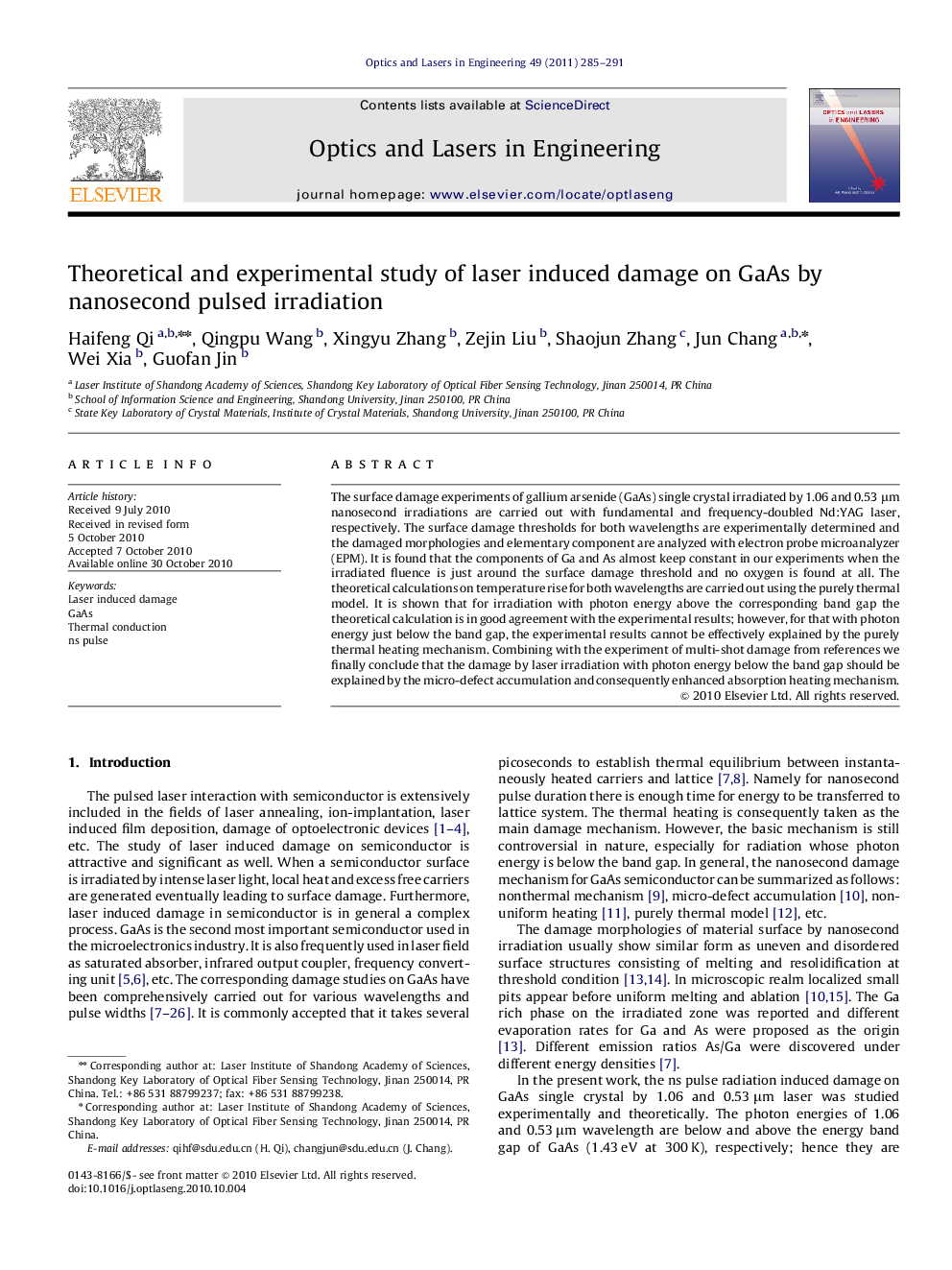| Article ID | Journal | Published Year | Pages | File Type |
|---|---|---|---|---|
| 735846 | Optics and Lasers in Engineering | 2011 | 7 Pages |
The surface damage experiments of gallium arsenide (GaAs) single crystal irradiated by 1.06 and 0.53 μm nanosecond irradiations are carried out with fundamental and frequency-doubled Nd:YAG laser, respectively. The surface damage thresholds for both wavelengths are experimentally determined and the damaged morphologies and elementary component are analyzed with electron probe microanalyzer (EPM). It is found that the components of Ga and As almost keep constant in our experiments when the irradiated fluence is just around the surface damage threshold and no oxygen is found at all. The theoretical calculations on temperature rise for both wavelengths are carried out using the purely thermal model. It is shown that for irradiation with photon energy above the corresponding band gap the theoretical calculation is in good agreement with the experimental results; however, for that with photon energy just below the band gap, the experimental results cannot be effectively explained by the purely thermal heating mechanism. Combining with the experiment of multi-shot damage from references we finally conclude that the damage by laser irradiation with photon energy below the band gap should be explained by the micro-defect accumulation and consequently enhanced absorption heating mechanism.
